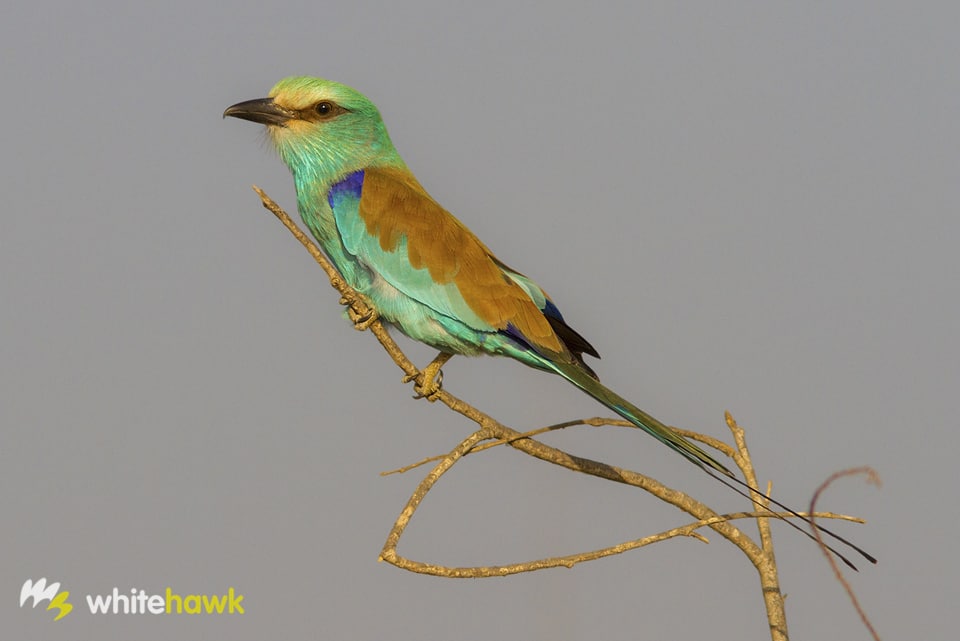
My first visit to Senegal left me wanting more. I was pleasantly surprised to find myself in such a friendly and extraordinarily diverse country. Senegal is extremely rich in wildlife. Thus it is an attractive destination for anyone ready to experience the natural wonders Africa has to offer.
The Democratic Republic of Senegal makes up the western tip of Africa. The majority of the country is dominated by a sub-Saharan tropical climate, with an ascending gradient of aridity from south to north. The Atlantic coastline enjoys moderately warm temperatures throughout the year due to the influence of the ocean. The interior boasts the typical bi-seasonality of the tropics marked by a rainy season and a dry season.
An Introduction to Senegal
Within Senegal’s borders, three ecosystems of great value converge. The Sahel meets the sub-humid tropical forest, and the mangrove wetlands associated with the Atlantic Coast. This is one of Senegal’s biggest attractions. Here one can enjoy the contrast between different natural environments in a relatively small area. We can find desert plains, wetlands, mangroves, savanna, riverside forests, sub-humid forests, and even agricultural areas. High species richness of the bird community reflects this diversity of habitat .
After my previous visit to the country, there were still many very interesting places left for me to see. With a new group of intrepid naturalists (Charles Torralvo, Gonzalo Gil, Manuel Lobón, Stephen Daly and myself) and the invaluable assistance of Abdou, we took full advantage of our ten days in-country enjoying long days in the field. For easier digestion, I will chronicle our adventures in three parts: Djoudj, Niokolo-Koba and Saloum.
Djoudj National Park
Since I had already visited the southeastern and the coastal areas of Senegal, my heart was set on visiting the northern part of the country, particularly Djoudj National Park. This park is an important and well-known reserve along the Mauritanian border. It is an obligatory rest-over point for thousands of wintering migratory birds. It is the most important wintering grounds in the world for the Aquatic Warbler.
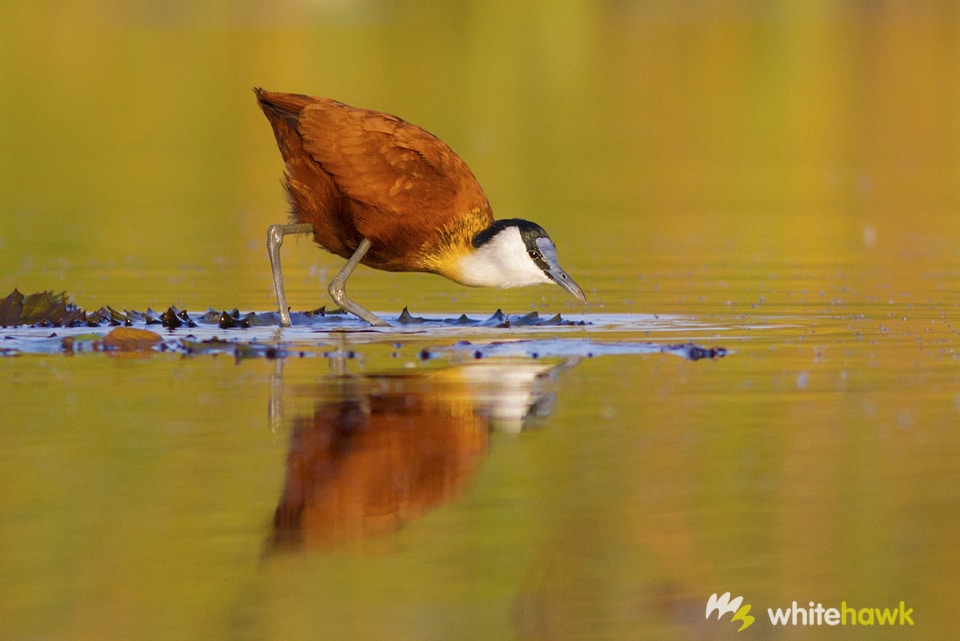
 It took us longer to get to Dakar than expected due to heavy traffic. But once we were out of town, travel was comfortable and the roads were pretty good. Even within Dakar, we were able to see our first cormorants, darters, Hooded Vultures, Senegal Coucals and a huge number of Egyptian Kites.
It took us longer to get to Dakar than expected due to heavy traffic. But once we were out of town, travel was comfortable and the roads were pretty good. Even within Dakar, we were able to see our first cormorants, darters, Hooded Vultures, Senegal Coucals and a huge number of Egyptian Kites.
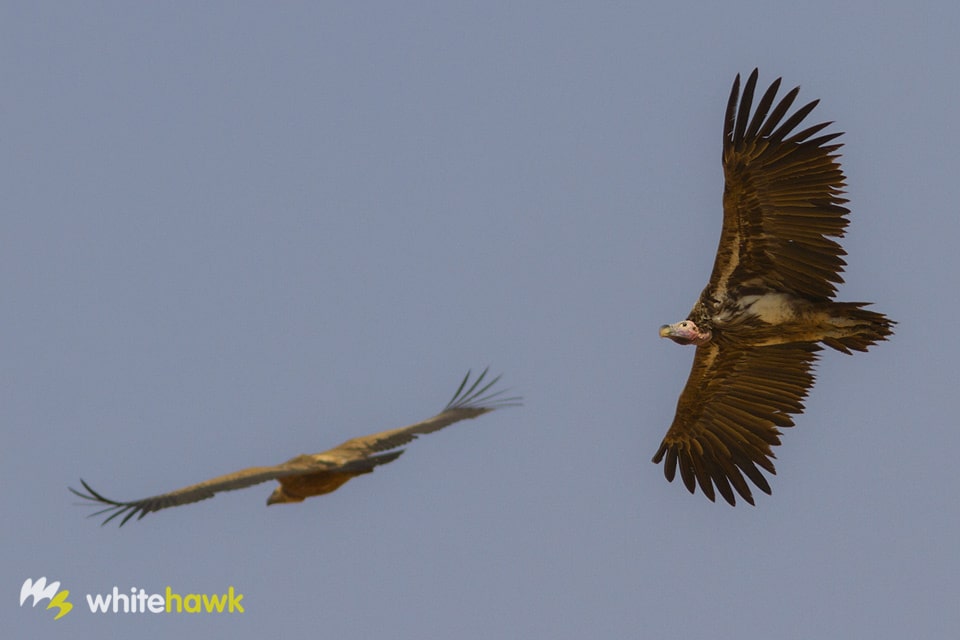
 Dakar to Djoudj
Dakar to Djoudj
The road from Dakar to Djoudj is long. But by making strategic stops along the way within the acacia savanna we got a lot out of this trip. We saw five species of vultures, hornbills, and both resident and migrant passerines. Our list includes Red-cheeked Cordon-blue, Speckled-fronted Weaver, Sahel Paradise Whydah and the Green Ptylia. We saw more than 120 species in one day of driving. This helped us familiarize ourselves with the local wildlife and the environment.
When it was time to eat, a mandatory stop for us was in Kebemer. There we tried thiebou djen, a plate which consists of rich and fish, vegetables. It has a sauce made with onion, tomato and tamarind juice, with a touch of spicy pepper and chili. A firm promise of the good food we would enjoy in Senegal, simple and very tasty.
In the afternoon, we crossed the city of Saint-Louis, near the mouth of the Senegal River. There we found the first bodies of water with significant numbers of waterfowl. Most notably, we observed Great, Intermediate, and Common egrets. Western Reef and Squacco herons were also present.
Djoudj Reserve
As we approached the Djoudj reserve, we found ourselves in a desert landscape. It was dotted with large concentrations of wildlife around the river and the pools of water which had accumulated in the rainy season. On this brief stop we saw Senegal Thick-knee, Temminck’s Stint and Little Stint. Other highlights here included the amazing Abyssinian Roller and the peculiar oxpeckers, always accompanying the cattle and taking care of their parasites.
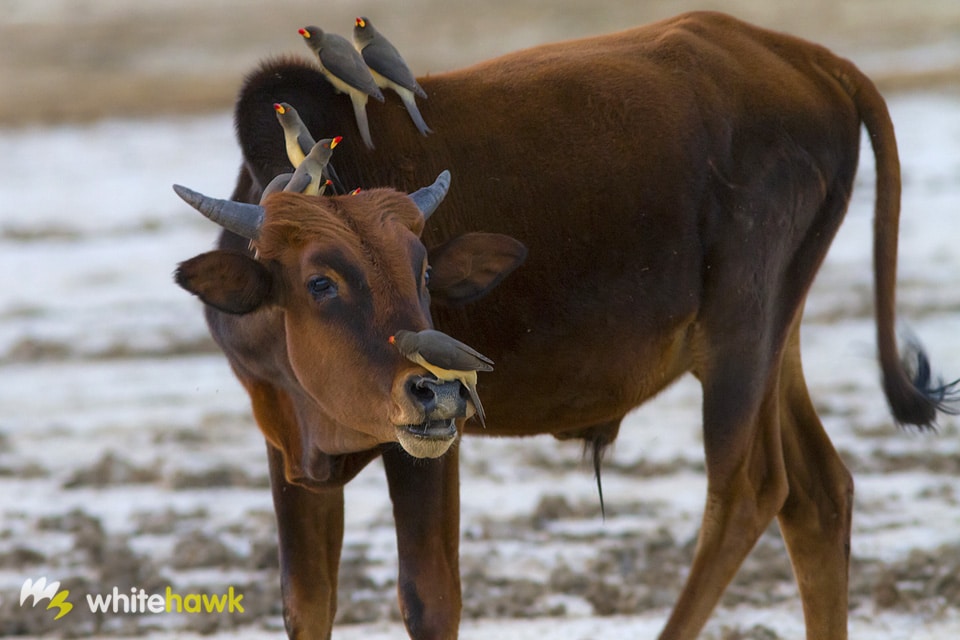
 Once we were settled at the park gates, we took a couple of days to explore the surrounding area. We woke to the song of the African Fish Eagle on the hotel grounds. The hotel was very birdy and provided shelter and food for a number of passerines including the Western Olivaceous Warbler, Subalpine Warbler, Lesser Whitethroat and large colonies of weavers and starlings.
Once we were settled at the park gates, we took a couple of days to explore the surrounding area. We woke to the song of the African Fish Eagle on the hotel grounds. The hotel was very birdy and provided shelter and food for a number of passerines including the Western Olivaceous Warbler, Subalpine Warbler, Lesser Whitethroat and large colonies of weavers and starlings.
We didn’t see aquatic warblers at Djoudj. But we all added birds to our life list including Orange-breasted Waxbill or the African Pygmy Goose. We also saw other more common species, and they were present in impressive numbers. In fact, these large flocks are the most important tourist attraction in the region. We saw enormous colonies of Great White Pelican. There were large concentrations of White-faced Whistling Duck, Great Cormorant and African Darter.
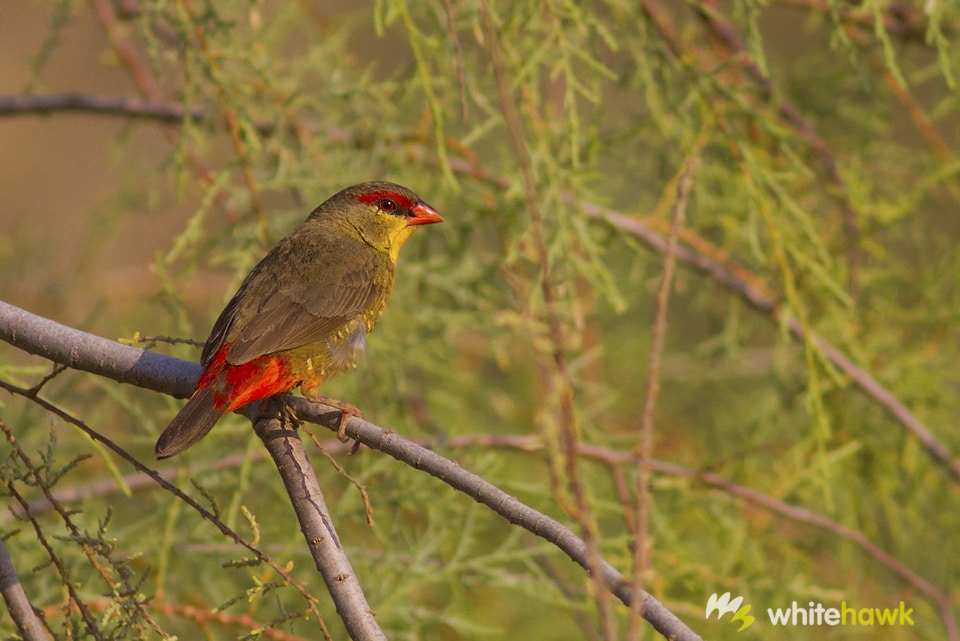
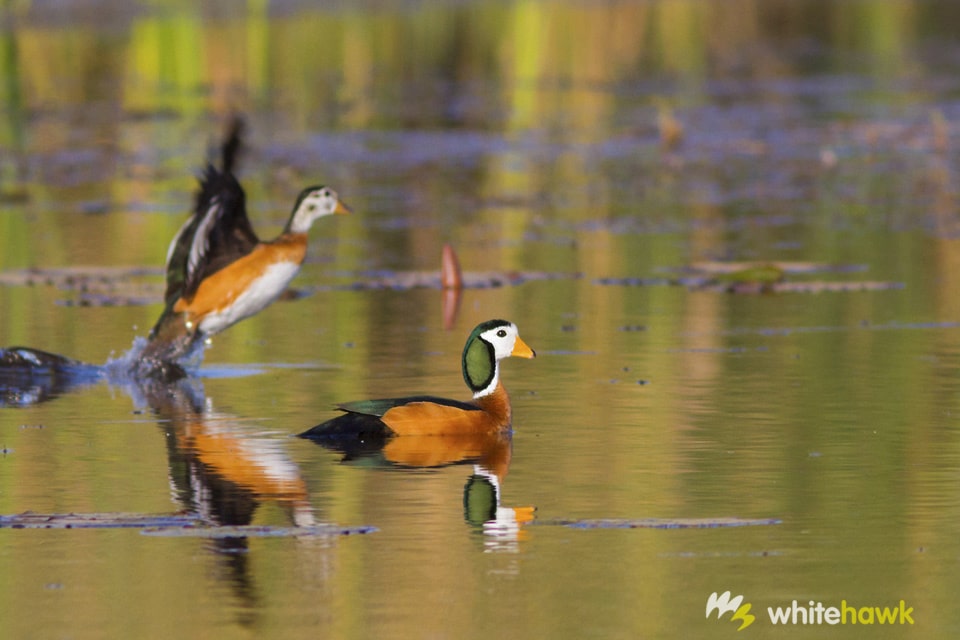
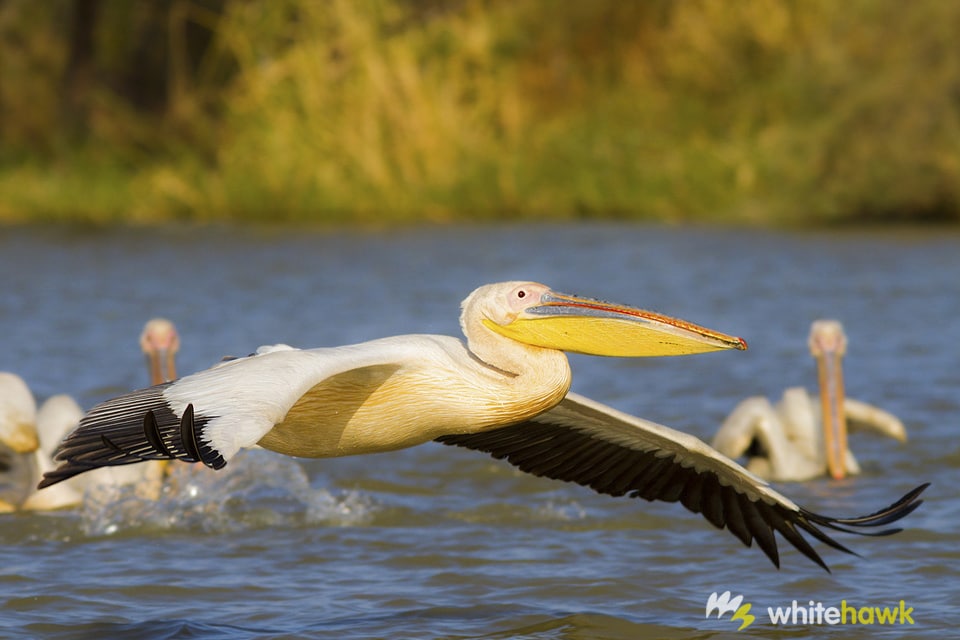
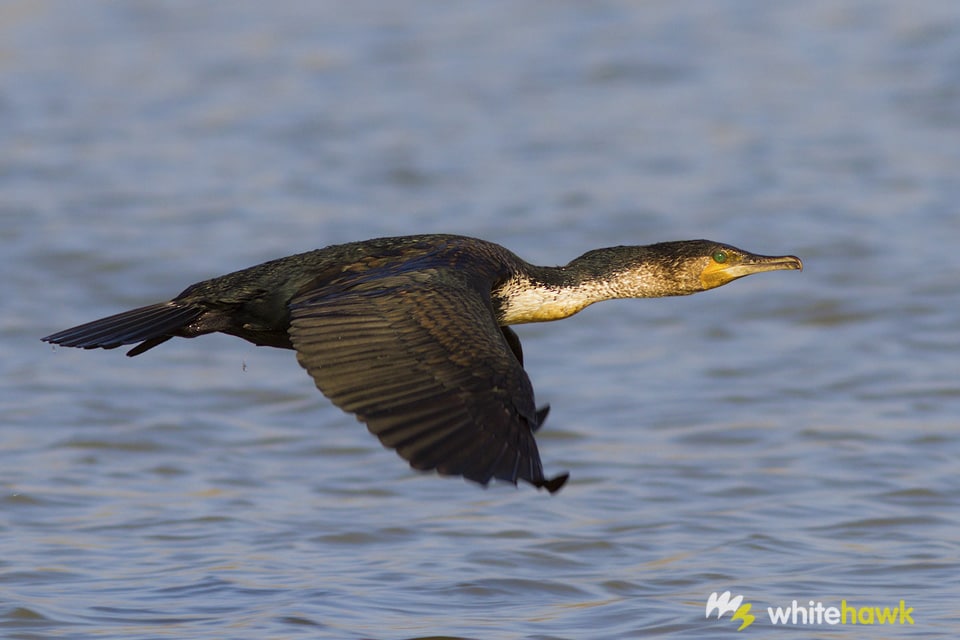
Grand Lac
 On the road to the big lake, located amid semi-desert plains with scattered acacia trees, there were some new surprises in store for us, as well, such as as the Kittlitz’s Plover, Kordofan Lark, Chestnut-backed Sparrowlark and Pallid Harrier. Once we were in Grand Lac, as the sun crept over the horizon, we contemplated enormous flocks of whistling ducks and large numbers of Black Crowned Crane, Eurasian Spoonbill and Yellow-billed Stork.
On the road to the big lake, located amid semi-desert plains with scattered acacia trees, there were some new surprises in store for us, as well, such as as the Kittlitz’s Plover, Kordofan Lark, Chestnut-backed Sparrowlark and Pallid Harrier. Once we were in Grand Lac, as the sun crept over the horizon, we contemplated enormous flocks of whistling ducks and large numbers of Black Crowned Crane, Eurasian Spoonbill and Yellow-billed Stork.
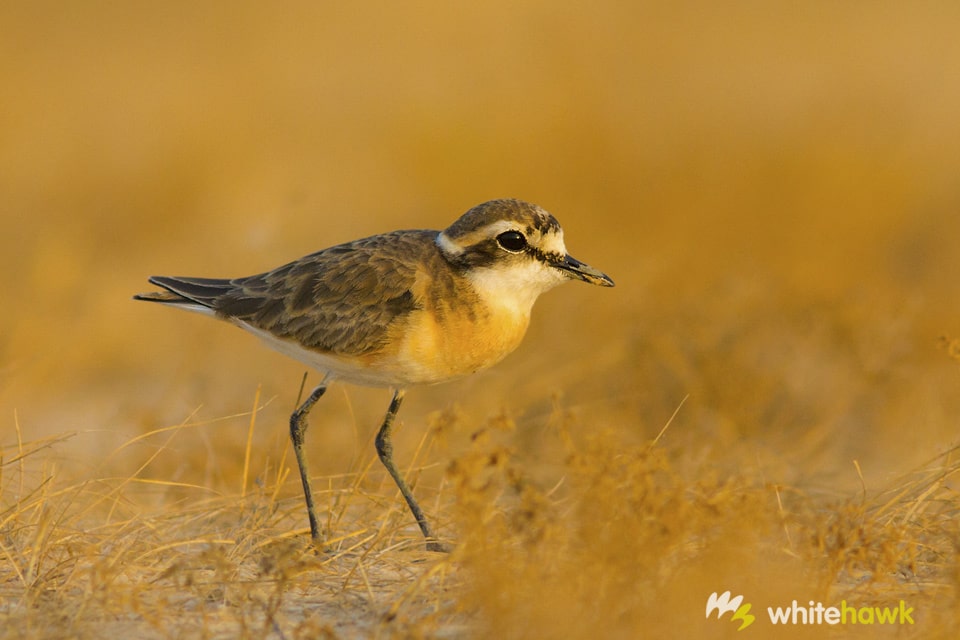
Richard Toll
On our last day in the north we visited Richard Toll, a city dedicated to the sugar industry. Here, we saw Golden Jackal and the first Patas Monkey. From here, we headed south to Langue de Barbarie (translated to Barbarie’s Tongue, which refers to a long, sandy peninsula along the coast close to Saint-Louis). We didn’t see many new species here. This spot may not be as interesting to one strictly interested in birding. But it was an amazing spectacle to see hundreds of fishing boats out at sea as the sun set. These traditional boats, painted in bright colors, paraded in front of a multitude of children that were playing with small boats made of aluminum cans, pretending that they too are taking off into the sea.
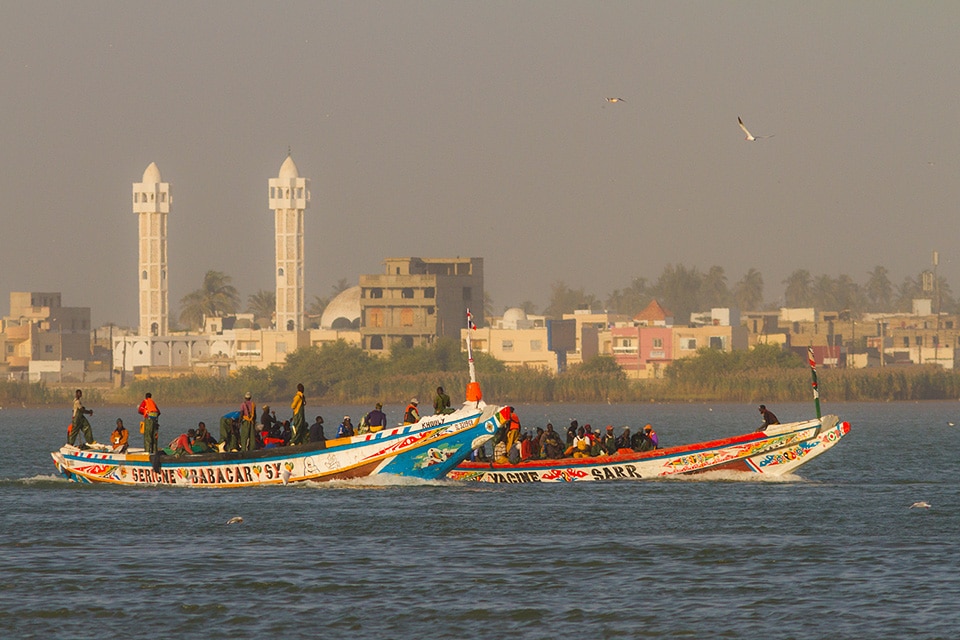
 One last sunset over the peninsula and an Osprey sighting were the perfect farewell to the arid, but succulent northern Senegal. Shortly, we would be on the long road leading to the Gambia River. Knowing what was still to come, I couldn’t wait to return to Wassadou and Niokolo-Koba. Read more here.
One last sunset over the peninsula and an Osprey sighting were the perfect farewell to the arid, but succulent northern Senegal. Shortly, we would be on the long road leading to the Gambia River. Knowing what was still to come, I couldn’t wait to return to Wassadou and Niokolo-Koba. Read more here.

